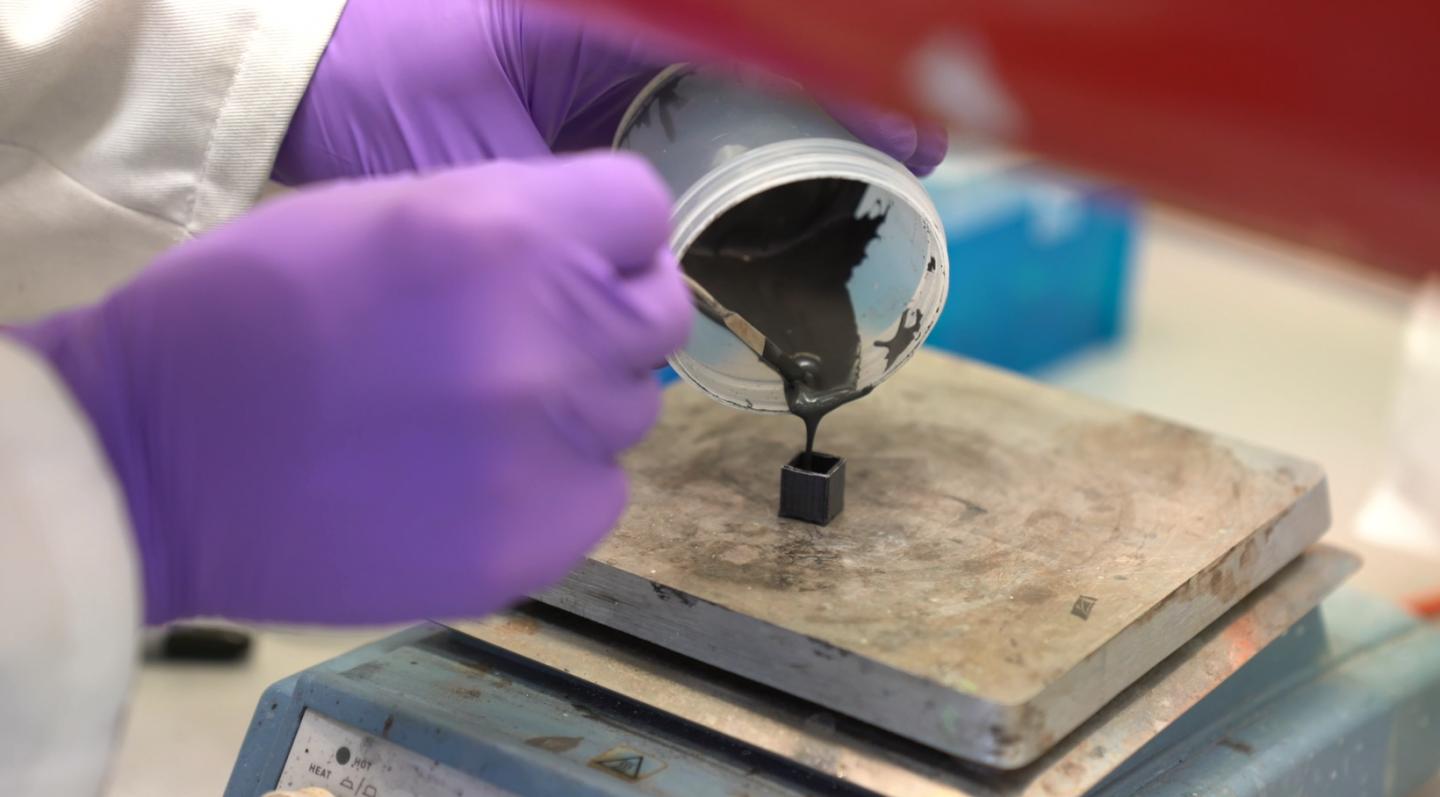The thermoelectric effect occurs when dissimilar metals in contact with each other are heated, and electron transfer from one metal to another starts a current flowing. It has been known for many years, but it's best known application today might be in space, where probes that cannot access solar energy easily use it to convert the heat from a lump of radioactive material into electricity to power their systems.

A team from the SPECIFIC Innovation and Knowledge Centre at Swansea University has used additive manufacturing techniques to make a thermoelectric device which it claims has an efficiency factor 50 per cent higher than the previous best for printed materials. Moreover, the team adds, the device should be cheap to produce in bulk.
The device uses material called tin selenide (SnSe), a compound made up from tin and selenium in different oxidation states. Previous research has shown that SnSe has high potential for thermoelectric behaviour, but the methods to manufacture it have until now required a great deal of energy and have therefore been both expensive and environmentally unfavourable.
In a paper in the journal Advanced Materials, lead researcher Matt Carnie and team explain how they formulated SnSe into a type of ink using a simple technique involving grinding tin and selenium metals together in a ball mill. X-ray diffraction proved that this grinding process was sufficient to convert the two metals into the compound. The team mixed the powder with sodium carboxymethyl cellulose and water to produce a homogeneous liquid, and again used x-ray diffraction to prove that the SnSe was still intact. This liquid formed the ink for the 3D printing process. The device was made by infiltrating a printed copper structure with the ink and drying it at a relatively low temperature.
Thermoelectric potential is measured by a value known as the "figure of merit (ZT)". The Swansea team’s generator achieved a ZT value of 1.7, compared with the previous record for a printed material of 1.0. This means an efficiency rate of converting heat to electric current of around 9.5 per cent, compared with 4.5 per cent for the previous record holder.
Industries that could benefit from such materials include steelmaking, which generates huge amounts of heat and also requires electrical power. Tata Steel is about to support a PhD researcher on the Swansea team to explore the industrial applications of their technology.
"Turning waste heat into electrical power can boost energy efficiency significantly, cutting bills and reducing carbon emissions. Our findings show that printed thermoelectric materials using tin selenide are a very promising way forward,” said Carnie.
“The device we developed is the best-performing printed thermoelectric material recorded to date, with the efficiency factor improved by over 50 per cent compared to the previous record. It is also cheap to produce in bulk compared with established manufacturing methods. More work is needed, but already our work shows that this technique, combining efficiency and economy, could be very attractive to energy-intensive industries."




Nanogenerator consumes CO2 to generate electricity
Nice to see my my views being backed up by no less a figure than Sabine Hossenfelder https://youtu.be/QoJzs4fA4fo